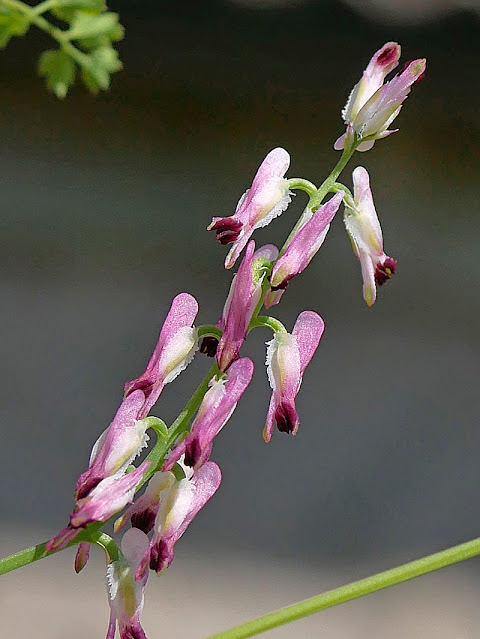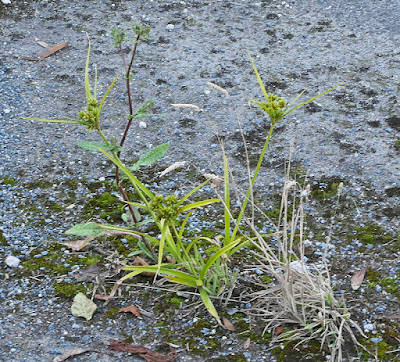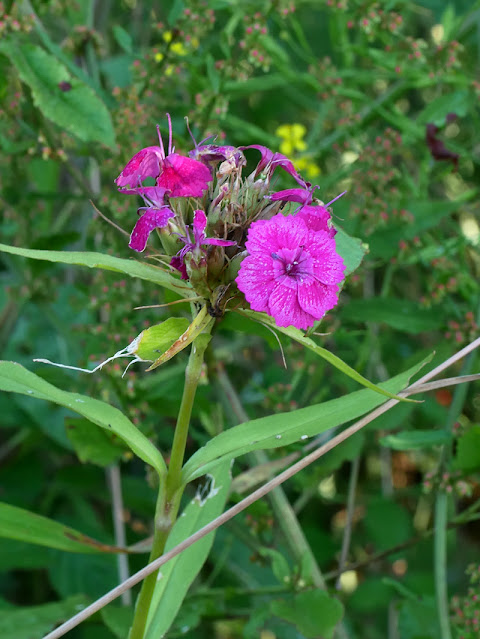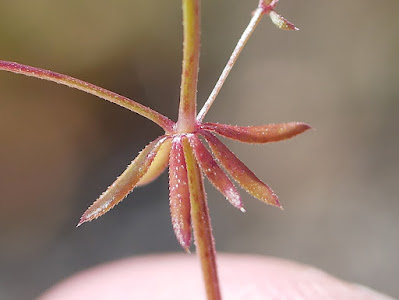To finish off July, here are some of the more interesting plants I found on my recording trips.
My first featured plant is a grass, specifically, Hard Grass. I had only seen this plant a few times and there were usually just a few clumps of it here and there. One evening, I took a walk down the tidal River Camel near Wadebridge and saw hundreds of them, all in "flower". It was quite an impressive sight for an unimpressive flower that I was unable to recreate in a photo.
Parapholis strigosa
Sea Club-rush was also in "flower" in the salt marsh.
Bolboschoenus maritimus
The River Camel is one of the few places in Cornwall where you can find English Scurvygrass. It's a large plant and favours saltmarsh rather than open coastlines.
Cochlearia anglica
Common Gromwell is an uncommon plant in Cornwall, but there is a small disused quarry along the River Camel where they grow. I counted around 20 plants, but the site is rapidly scrubbing over, so they may be lost in a few years time.
Lithospermum officinale
I was lucky to find just one Sea Milkwort still in flower, though there were thousands of plants along the upper edges of the saltmarsh.
Lysimachia maritima
Common Calamint now flowering too, it seems to be more common in Cornwall than it was in Kent.
Clinopodium ascendens
I have been finding and recording many new areas containing Climbing Corydalis of late. I usually only find one or two clumps of it sprawling through other vegetation, with most being in seed by now and beginning to wither. So I was lucky to find one near Davidstow Moor still flowering.
Cerotocapnos claviculata
Common Figwort is one of several Figwort species found in Cornwall, this one again, from Davidstow Moor.
Scrophularia nodosa
On a Cornwall Botany Group field trip to Porthoustock (East side of The Lizard peninsular) we found some of the rare and beautiful Purple Ramping Fumitory. This was only the second time I have seen this plant.
Fumaria purpurea
On the beach we found a plant that was new to me, but I instantly recognised it as Ray's Knotgrass. I had been looking for it for a while, so it was good to finally see some. It's clearly not one of the common aggregate species as it's a large sprawling plant with big flowers. It's like Sea Knotgrass in size, but the leaves do not curl under and the internodes are long not short and cramped. The nutlets also protude from the tepals.
Polygonum oxyspermum subsp raii
Next to it was Cornfield Knotgrass (Polygonum rurivagum) but unfortunately my photos came out poor for that species.
There were many Haresfoot Clovers around the beach car park and nearby clifftops, most in seed, but a few still had some flowers tucked away in their fluffy heads. We also discovered lots of Greek Sea-Spurrey around the car park too, all in seed.
Trifolium arvense
On the way home from this field trip, I stopped off at Traboe Cross, near Goonhilly to view some of the flora there. Cornish Heath were flowering in their thousands, with pink, white and all shades in between decorating the road verges and heathland.
Erica vagans
Sneezewort was also abundant, especially along the road verges, growing with Great Burnet.
Achillea ptarmica
Great Burnet in flower on a road verge.
Sanguisorba officinalis
My last find of note was in a town centre. I was walking around Wadebridge looking for new plant species when I found a Plume Poppy growing out the base of a tall wall. It had been recorded before but it shows you that there are always surprises to be found. It spreads from rhizomes, so I imagine that a root from the garden above the wall had grown down 8 feet and driven itself through the wall into the street! The same trip I also recorded a Himalayan Honeysuckle tree growing out of a wall by the local Co-op and several other oddities.
Macleaya cordata x microcarpa M x kewensis
With that, July is written up. I hope the selection was interesting and that you come back for plants I might find in August in Cornwall.
Take Care
Dave





























































